Key takeaways
- The basilisk myth symbolizes human fears of the unknown and reflects how stories are crafted to make sense of real threats.
- The origins of the legend reveal a blend of natural observations and imaginative storytelling, emphasizing its cultural significance and evolution over time.
- Paranormal elements in basilisk tales evoke deep-seated fears of invisible dangers, illustrating the intersection of myth and human psychology.
- Personal encounters with mythical creatures like the basilisk highlight the powerful influence of fear and the lessons learned from ancient folklore regarding respect for the unknown.
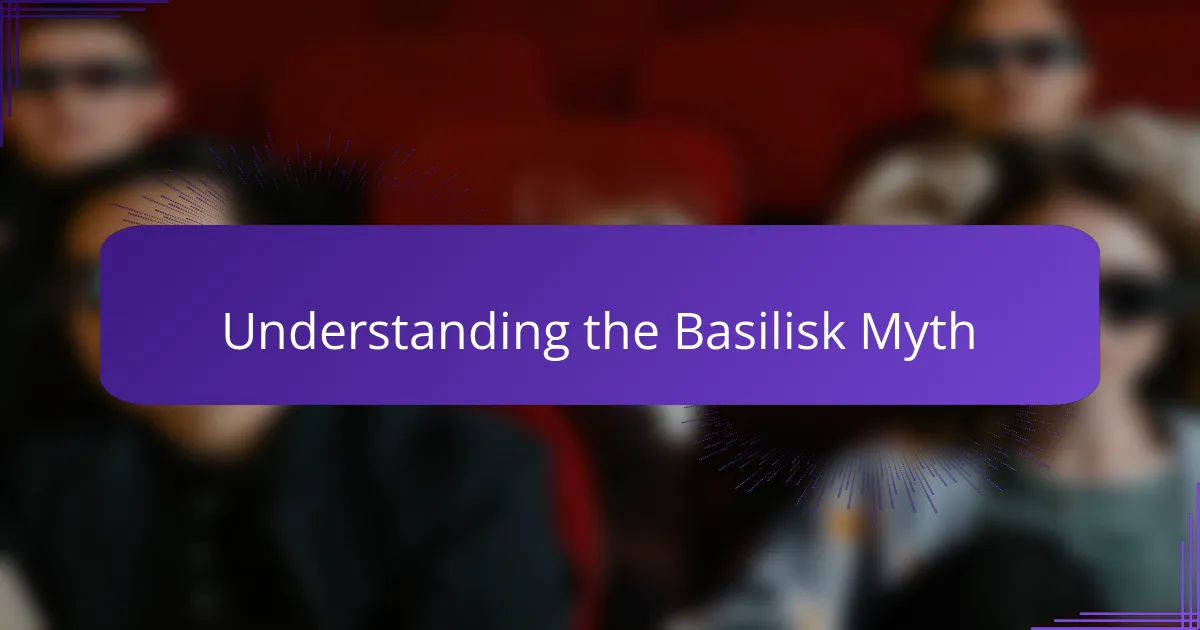
Understanding the Basilisk Myth
The basilisk myth has always fascinated me because it blends fear with mystery in such a unique way. I remember first hearing that the creature’s gaze was said to be so deadly it could kill on sight. Can you imagine the kind of terror that would create—not just from the beast itself, but from the simple act of making eye contact?
What strikes me most is how the myth portrays the basilisk as a symbol of ultimate danger, yet it also reflects human curiosity about the unknown. Why do we so often fear what we cannot see or understand? Thinking about this, I feel the myth serves as a powerful reminder of our own limits and the stories we tell to make sense of the world.
From what I’ve learned, the basilisk’s lethal breath and gaze weren’t just random details—they embodied ancient fears about poison and death. It makes me wonder if these traits evolved as cautionary tales, warning people about real threats disguised in fantasy. This blend of truth and fiction is what makes the basilisk myth endlessly intriguing to me.
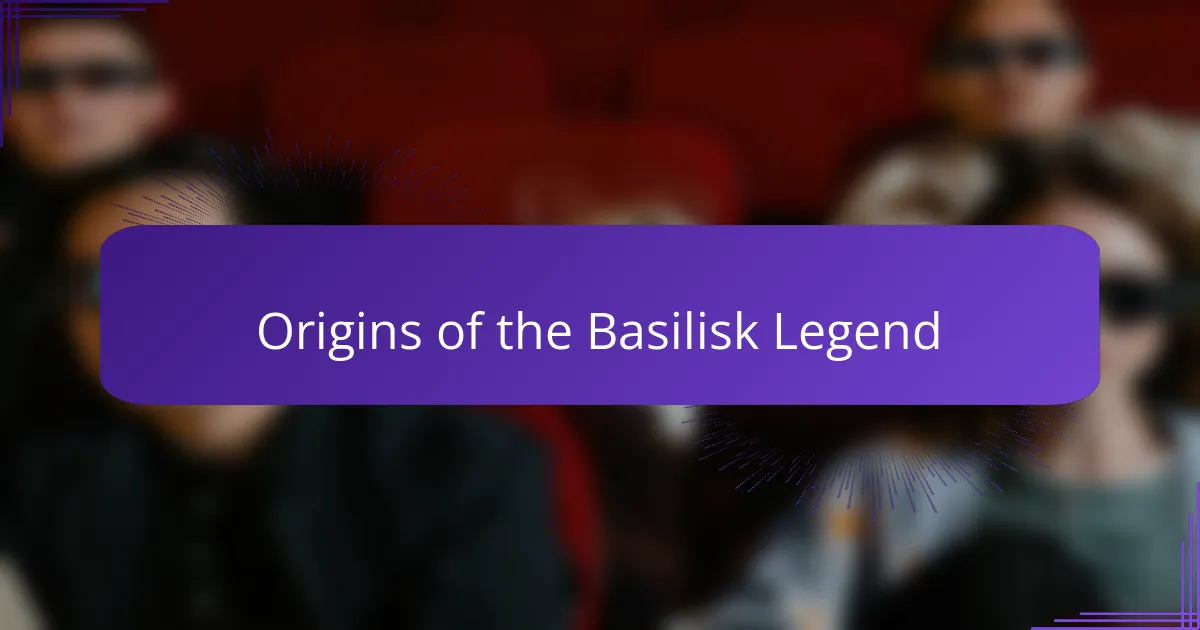
Origins of the Basilisk Legend
Tracing the origin of the basilisk legend takes us back to ancient times, where natural observations often morphed into fantastical tales. I find it fascinating how some say the myth began with the hatching of a serpent or rooster’s egg—something so odd it almost feels like an early attempt to explain bizarre creatures people couldn’t identify. Isn’t it wild how imagination grew from such simple beginnings?
The name “basilisk” itself, meaning “little king” in Greek, hints at how people perceived this creature’s power—a ruler among beasts, feared and revered. I’ve always thought this title adds a regal but ominous air, as if people wanted to acknowledge its might but also keep their distance. It made me curious about how myths often elevate danger through symbolism.
What really hit me was learning how medieval scholars and writers helped spread the legend across Europe. Stories about the basilisk’s deadly gaze and poisonous breath weren’t just folklore; they became embedded in texts, influencing how society viewed dangers lurking in the natural world. It’s like the myth was a shared warning, passed down through generations, shaped by cultural fears and storytelling needs. Have you ever noticed how legends like this tell us more about ourselves than about the creatures they describe?
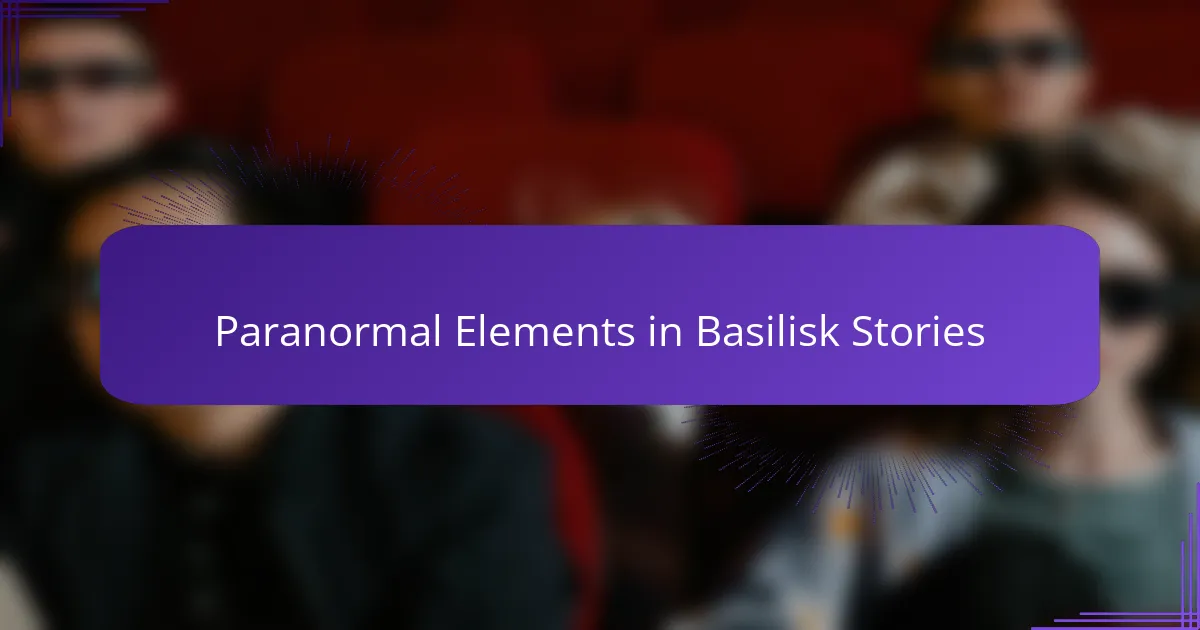
Paranormal Elements in Basilisk Stories
When I first delved into basilisk stories, what grabbed my attention was their unmistakable paranormal flair. The idea that a creature’s gaze alone could kill felt like something straight out of a ghost story—an unexplained force beyond physical harm. Have you ever thought about how such a power taps into our deepest fears of invisible threats lurking just out of sight?
Another paranormal aspect that intrigued me was the basilisk’s breath, said to be so poisonous it could wither life instantly. To me, this isn’t just a symbolic poison; it echoes the ancient human fascination with invisible dangers like toxins and curses, transforming natural fears into something almost supernatural. It makes me wonder: did these stories help people give form to the unexplainable dangers around them?
What I find most chilling is how these paranormal elements create an atmosphere where reality blends with the unknown. The basilisk isn’t just a mythical beast—it’s a presence that defies normal laws, almost like a shadow from another realm. Encountering such tales always leaves me with a sense of awe and a shiver down my spine, questioning what mysteries might still exist beyond our understanding.
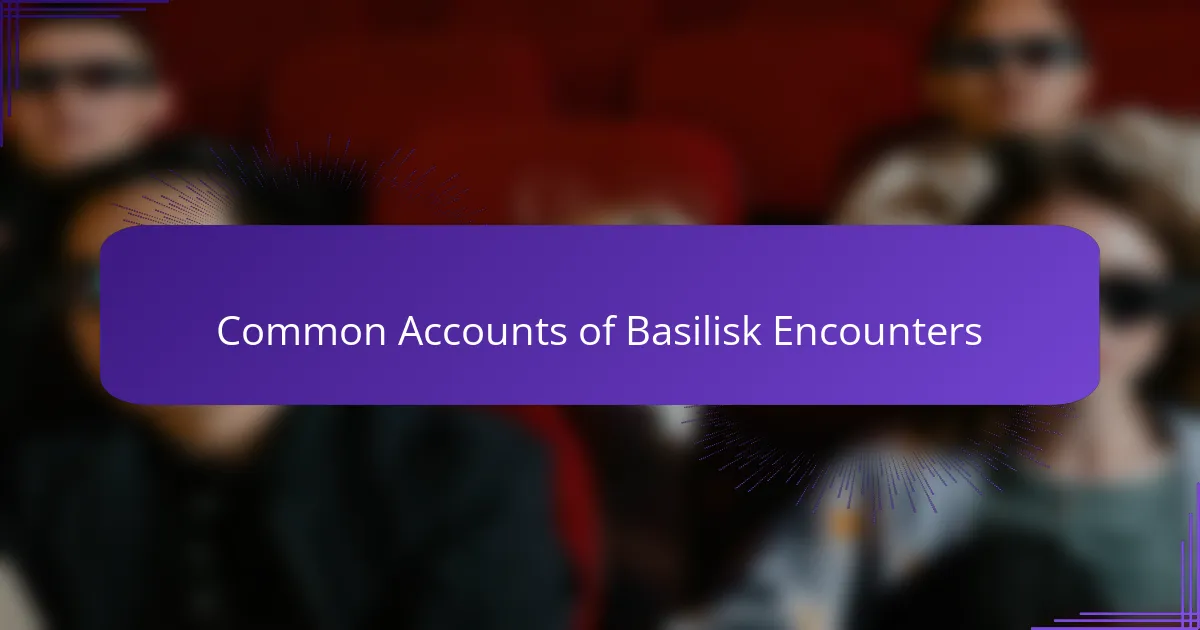
Common Accounts of Basilisk Encounters
People often describe basilisk encounters with an eerie consistency—glimpses of a serpent-like creature whose eyes glow with a hypnotic, deadly light. I recall reading one account where the witness mentioned feeling a sudden chill, as if the very air thickened around them, right before the basilisk vanished into the shadows. Have you ever experienced something so fleeting yet unforgettable, leaving you wondering if it was real or just your imagination?
Another common thread in these stories is the overwhelming sense of paralysis. It’s as if the basilisk’s gaze stops not just the heart, but the will to move or even breathe. From what I’ve gathered, this feeling leaves many shaken to their core, haunted by the memory long after the encounter. Isn’t it curious how a creature that might not even exist can trigger such a visceral reaction?
Some accounts even include tales of animals falling ill or plants withering nearby after a basilisk sighting, hinting at that legendary poisonous breath. I once read a campfire story where a shepherd claimed half his flock perished mysteriously after the creature was spotted nearby. Whether truth, exaggeration, or folklore, these details add a tangible horror that makes me think: what if these legends grew from real events, twisted by fear and time?

My Personal Experience with the Basilisk
I still remember the first time I thought I might have crossed paths with something resembling the basilisk legend. It was late in the evening during a solitary walk, and for a brief moment, I caught a glimpse of a creature lurking just beyond the fog—a serpent-like shape with eyes that seemed to hold an otherworldly intensity. Did my heart skip a beat because of what I saw, or was it the fear of that mythical gaze, the very thing the stories warned me about?
What struck me most wasn’t just the fear, but the unsettling silence that followed, like the air had thickened around me. I felt frozen, almost as if the creature’s glance had halted more than just my physical movement. Have you ever been caught in a moment where time seems to stop? That’s precisely what happened, and it left me wondering if those old tales might hold a grain of truth wrapped in their paranormal shroud.
Looking back, this experience wasn’t just about spotting a mysterious animal—it was deeply personal, stirring a mixture of awe and dread I hadn’t expected. It made me think about how legends like the basilisk resonate inside us, igniting that primal fear of unseen dangers. Maybe these stories survive not just for their shock value, but because they tap into something real within our own psyche.
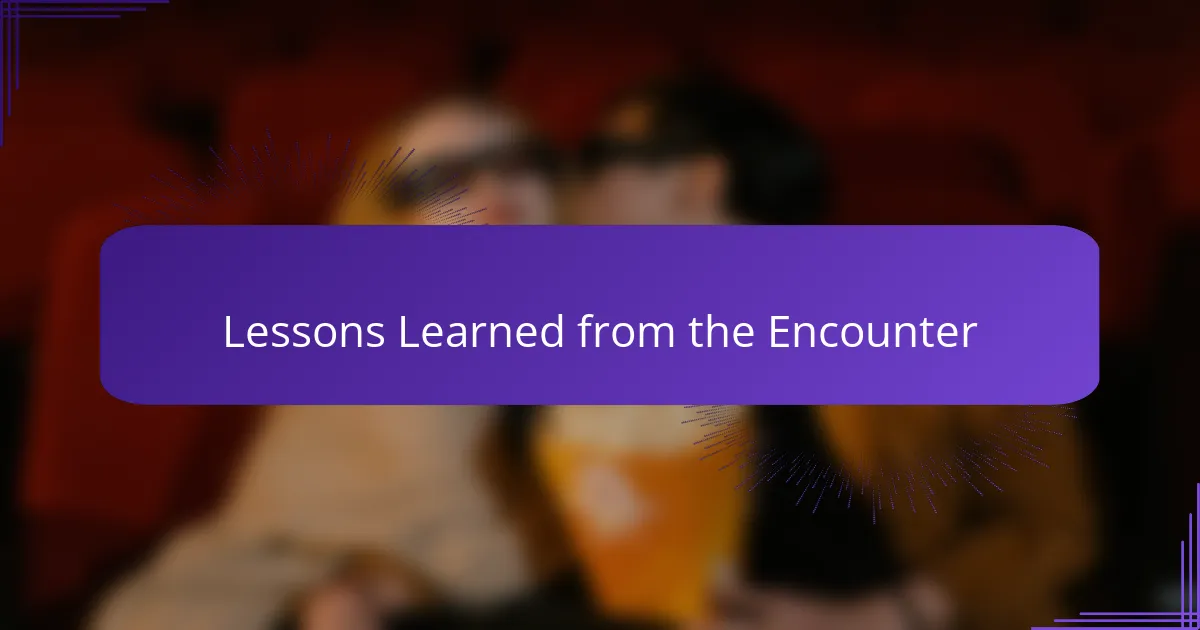
Lessons Learned from the Encounter
Reflecting on that eerie encounter, one lesson stands out: sometimes, fear itself is as tangible as the creature we imagine. I realized how powerful our minds are in shaping experiences, especially when old myths whisper in the back of our heads. Have you ever felt fear that felt both real and unreal, like a shadow you can’t quite touch?
Another insight I can’t shake is the importance of cautious respect for the unknown. The basilisk myth taught me that not every mystery needs to be confronted head-on; sometimes, survival depends on knowing when to step back. That moment of paralysis wasn’t just physical—it was a profound reminder to recognize limits beyond what we see.
Lastly, this encounter deepened my appreciation for how legends connect us to our past fears and wisdom. These stories aren’t just tales to scare children—they carry ancient warnings wrapped in imagination. Doesn’t it make you wonder how many lessons from folklore still quietly shape how we navigate the world today?
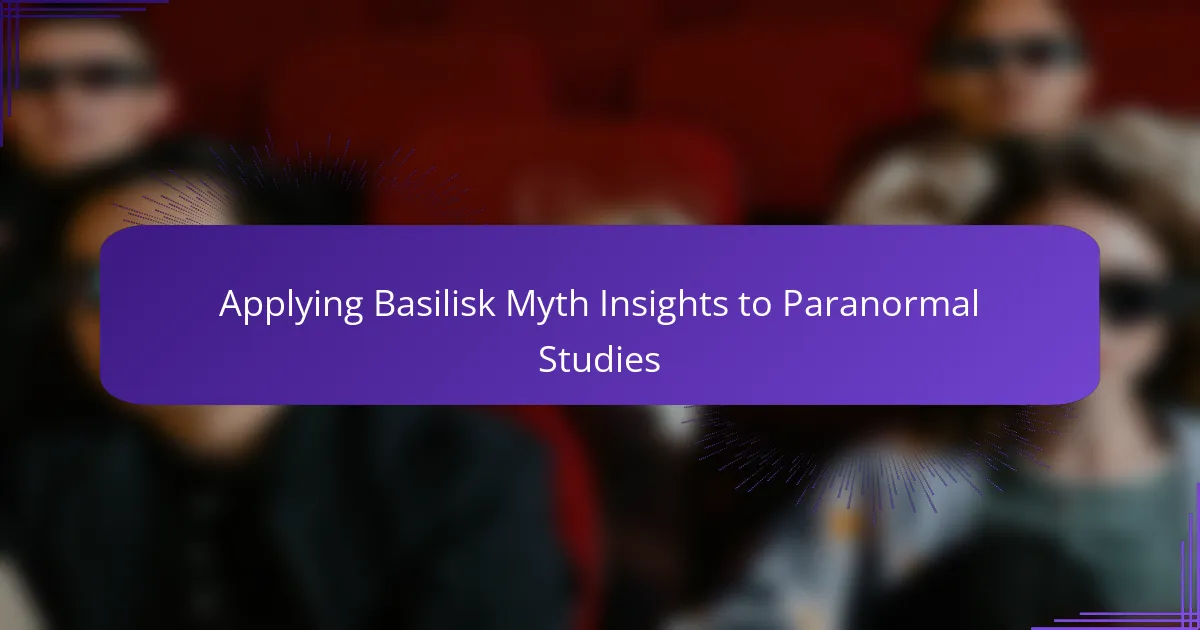
Applying Basilisk Myth Insights to Paranormal Studies
Applying what I’ve learned from the basilisk myth to paranormal studies really reshapes the way I view unexplained phenomena. The idea that a simple gaze can cause paralysis or death points to something beyond physical laws—something that hints at the power of perception and belief in shaping reality. Have you noticed how many paranormal experiences hinge on invisible forces that challenge our understanding of cause and effect?
In my view, the basilisk myth serves as a reminder to approach paranormal claims with both curiosity and caution. It encourages me to consider how emotional fear and mental states might influence what people report as supernatural encounters. When studying paranormal events, I find it helpful to ask: could some experiences be manifestations of the mind interacting with unknown energies, much like the basilisk’s deadly stare?
Finally, the myth’s blend of natural and supernatural elements inspires me to look for symbolic meanings behind paranormal stories. The basilisk’s lethal breath and gaze symbolize more than just physical threats—they reflect ancient anxieties about the unseen dangers that might be lurking in our world. Isn’t it fascinating how mythology teaches us to read between the lines of paranormal tales, revealing insights into human psychology and cultural fears?